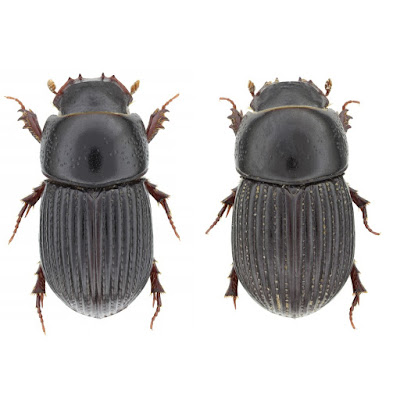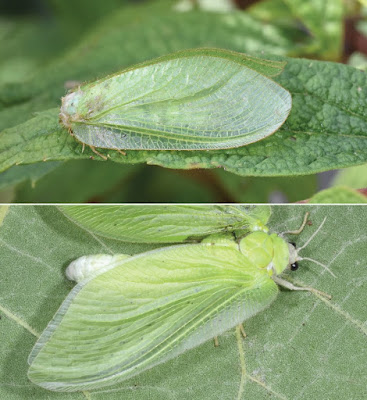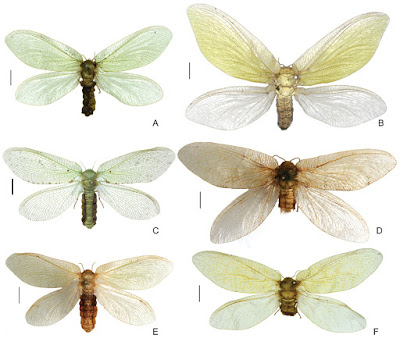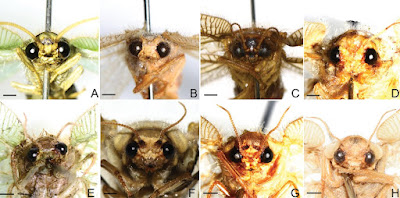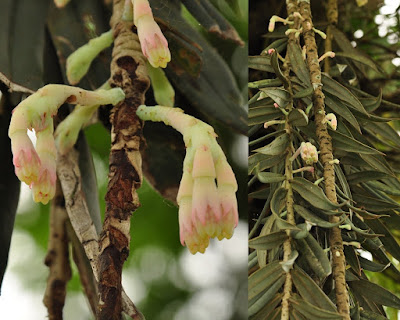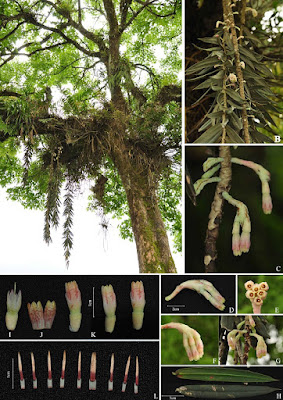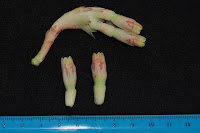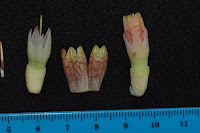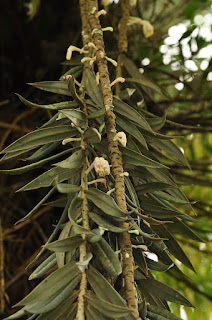[Most Recent Entries] [Calendar View]
Sunday, January 14th, 2018
| Time | Event | ||||||
| 2:01p | [Entomology • 2018] Ahermodontus bischoffi — Rediscovery of An Endemic Dung Beetle Species (Coleoptera: Scarabaeidae: Aphodiinae) in Albania After More Than 80 years
The genus Ahermodontus Báguena, 1930 (Coleoptera: Scarabaeidae: Aphodiinae) is currently comprised of three species: A. marini Báguena, 1930 and A. ambrosi (Pardo Alcaide, 1936) from southern Spain and Morocco and A. bischoffi (Všetečka, 1939) from Albania (see e.g., Dellacasa et al. 2001, 2002, 2016). The distribution and bionomy of both of the western Mediterranean Ahermodontus species are relatively well known. Contrastingly, A. bischoffi was described using a single female specimen collected by A. Bischoff in Llogara, Albania in 1934 (Všetečka 1939) and additional specimens remained unknown until now. Geodesist Alfons Bischoff (1890–1942) was a famous Albanian speleologist and insect collector (Horn et al. 1990; Genest & Juberthie 1994; Zhalov 2015). He often made his insect material accessible to specialists on particular insect groups and several species is dedicated to him: for example, the Carabidae (Coleoptera) species Duvalius bischoffi Meschnigg, 1936, Pterostichus bischoffianus Jedlička, 1936, and Zabrus bischoffi Müller, 1936, and the paper wasp Polistes bischoffi Weyrauch, 1937 (Hymenoptera: Vespidae). ....
Adam Byk, Aleš Bezděk, Tomasz Gazurek, David Král and Sebastian Tylkowski. 2018. Ahermodontus bischoffi — Rediscovery of An Endemic Dung Beetle Species (Coleoptera: Scarabaeidae: Aphodiinae) in Albania After More Than 80 years. Zootaxa. 4370(3); 283–288. DOI: 10.11646/zootaxa.4370.3.8 | ||||||
| 2:46p | [Entomology • 2018] A Review of the Montane Lacewing Genus Rapisma McLachlan (Neuroptera, Ithonidae) from China, with Description of Two New Species; Rapisma changqingensis & R. chikuni Abstract The genus Rapisma McLachlan, 1866 (Insecta: Neuroptera: Ithonidae) is a rare and poorly known lacewing group endemic to Asia. Here I present a revision of the Rapisma species from China, with description of two new species, namely Rapisma changqingensis sp. n. and Rapisma chikuni sp. n. The Chinese Rapisma now comprises five species that respectively belong to two monophyletic species groups. Rapisma changqingensis sp. n. represents the northernmost record of the genus, being distributed at the border of eastern Palaearctic and Oriental regions. Moreover, the homology of genital sclerites of Rapisma is also updated. Key Words: Neuropterida, taxonomy, new species, Oriental region Rapisma changqingensis sp. n. Etymology: The new species is named based on the Changqing National Nature Reserve where type specimens of this species were collected. Distribution: China (Shaanxi). Rapisma chikuni sp. n. Etymology: The new species is dedicated to Prof. Chikun Yang who made outstanding contributions to the taxonomy of Rapisma from China. Rapisma daianum Yang, 1993 Rapisma daianum Yang, 1993: 147. Type locality: China (Yunnan: Menghai). Distribution: China (Yunnan). Rapisma xizangense Yang, 1993 Rapisma xizangense Yang, 1993: 148. Type locality: China (Xizang: Jigong). Rapisma zayuanum Yang, 1993: 149. Type locality: China (Xizang: Jigong). Distribution: China (Xizang). Rapisma yanhuangi Yang, 1993 Distribution: China (Sichuan). Conclusions: This study summarized the present knowledge on the ithonid genus Rapisma from China, currently with five species that respectively belong to two monophyletic species group. The morphology of the genitalia of this genus was also further understood. In addition, the distribution region of Rapisma is now known to reach the border between Palaearctic and Oriental regions. Rapisma is the only extant genus of Ithonidae from Asia. The phylogenetic status of this genus in Ithonidae, as well as the phylogenetic relationships among species within the genus, is of high interest and significance for understanding the origin and diversification pattern of the genus. A dated phylogeny of Ithonidae and Rapisma as well stand as a key to figure out the above questions, while comprehensive sampling, particularly new materials for molecular works, is required. Xingyue Liu. 2018. A Review of the Montane Lacewing Genus Rapisma McLachlan (Neuroptera, Ithonidae) from China, with Description of Two New Species. Zoosystematics and Evolution. 94(1): 57-71. DOI: 10.3897/zse.94.21651 | ||||||
| 2:50p | [Botany • 2017] Agapetes brevipedicellata • A New Species (Ericaceae) from Putao, Kachin State, Northern Myanmar
Abstract Agapetes brevipedicellata, a new species of Ericaceae from Putao, Kachin State, Myanmar, is here described and illustrated. It is morphologically similar to Agapetes pseudogriffithii, but can be easily distinguished from the latter by its nearly fleshy branchlets, linear-lanceolate leaf blades, stout, fleshy, bracteate peduncles, pedicels and calyx pale greenish tinged with pale pink, and stems and branches with prominent leaf and inflorescence scars. Keywords: Myanmar, Agapetes brevipedicellata, Ericaceae, new species, Vaccinieae, Eudicots Shi-Shun Zhou, Bin Yang, Yi-Hua Tong, Hong-Bo Ding, Ren Li, Win Maung Kyan and Yun-Hong Tan. 2017. Agapetes brevipedicellata (Ericaceae), A New Species from Putao, Kachin State, Northern Myanmar. Phytotaxa. 331(1); 117–123. DOI: 10.11646/phytotaxa.331.1.10 A New Species of Ericaceae Reported from Northern Myanmar - english.cas.cn/newsroom/research_news/20 |
| << Previous Day |
2018/01/14 [Calendar] |
Next Day >> |
